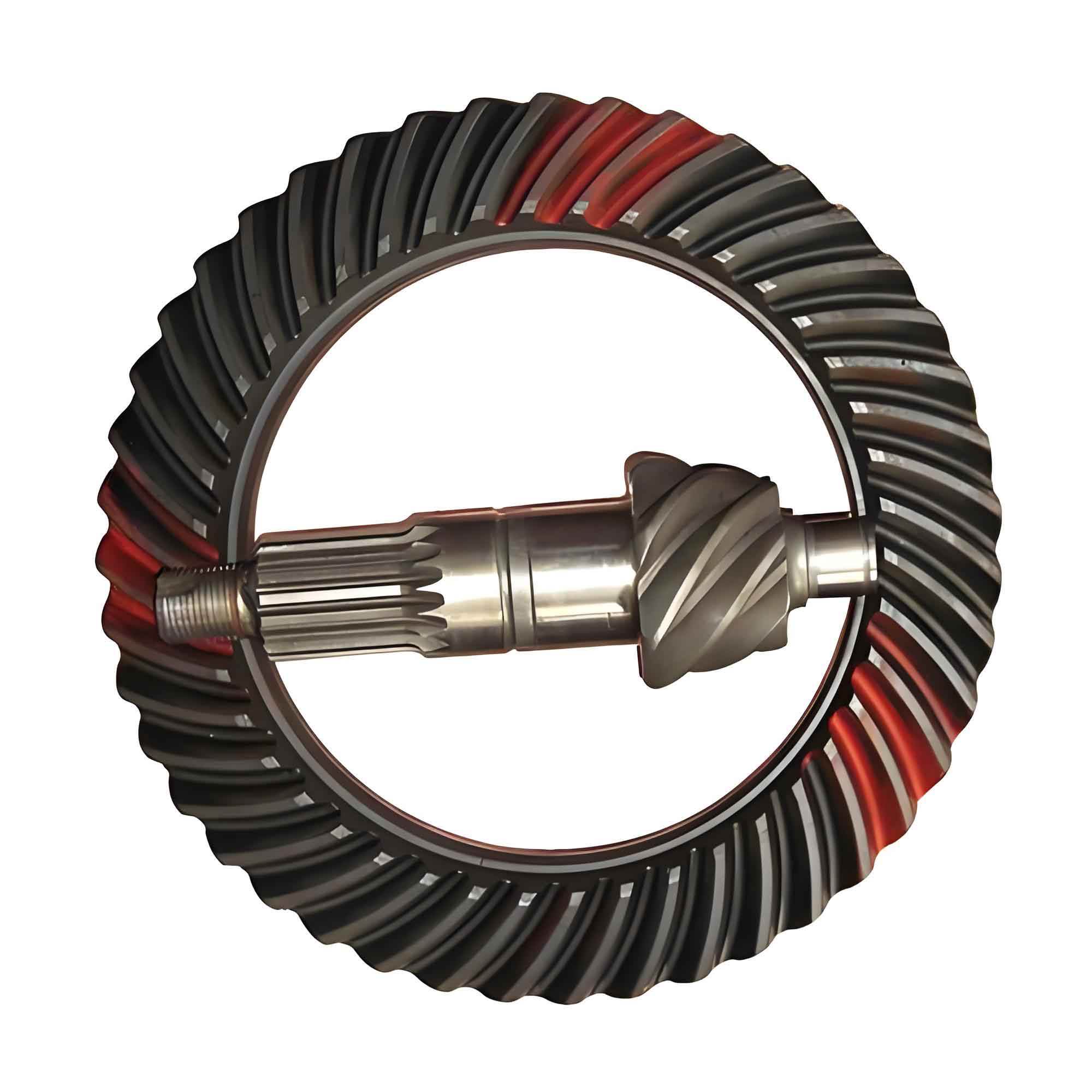Automotive gears are critical transmission components subjected to complex operational stresses, demanding exceptional wear resistance, contact fatigue strength, and bending fatigue resistance. Heat treatment remains indispensable for achieving these properties in low-carbon alloy steels commonly used in gear manufacturing. The standard process chain involves forging → pre-heat treatment → machining → surface hardening → finishing. This article comprehensively reviews conventional and emerging heat treatment technologies, emphasizing advancements in quality control, energy efficiency, environmental sustainability, and intelligent process optimization for automotive gear production.

1 Overview of Heat Treatment Processes
1.1 Pre-Heat Treatment
Pre-heat treatment of forged automotive gear blanks optimizes machinability and prepares the microstructure for subsequent hardening. Conventional normalizing causes significant hardness variations (156-207 HB) due to inconsistent cooling rates, leading to distortion during carburizing. Isothermal annealing at 560–650°C delivers uniform hardness (160-180 HB) and refined microstructure. Energy-efficient approaches utilize forging residual heat for isothermal transformation:
$$ T_{\text{iso}} = A_{r1} – \Delta T \quad \text{(where } \Delta T \approx 50-100°\text{C)} $$
| Process | Temperature (°C) | Hardness (HB) | Microstructural Uniformity |
|---|---|---|---|
| Conventional Normalizing | 900-950 | 156-207 | Low |
| Isothermal Annealing | 560-650 | 160-180 | High |
| Forging-Heat Integration | ≈900 → 560-650 | 160-175 | Medium-High |
1.2 Carburizing
Gas carburizing dominates surface hardening for automotive gears, enhancing core toughness and surface hardness. Conventional methods face limitations including non-martensitic surface layers and distortion. Vacuum carburizing (600–1000 Pa) eliminates intergranular oxidation and improves process control. The carbon diffusion depth follows Harrisons equation:
$$ d = k\sqrt{t} $$
where \(d\) = case depth (mm), \(k\) = temperature-dependent constant, and \(t\) = time (hours). BH catalytic acceleration enhances carburizing kinetics, reducing cycle times by 15-20% and energy consumption by 90 kWh/batch.
1.3 Carbonitriding
Carbonitriding combines carbon and nitrogen diffusion for enhanced surface hardness at lower temperatures (820-860°C). While suitable for low-modulus gears, deep case depths require extended processing. Vacuum carbonitriding and rare earth (RE) catalysis address these limitations. RE elements modify diffusion kinetics:
$$ J_{\text{C,N}} = -D_{\text{RE}} \frac{\partial C}{\partial x} $$
where \(J_{\text{C,N}}\) = carbon/nitrogen flux, \(D_{\text{RE}}\) = diffusion coefficient with rare earths.
1.4 Nitriding
Ion nitriding at 500–580°C minimizes distortion in precision automotive gears. Traditional concerns about load-bearing capacity are mitigated through process optimization. Surface nanocrystallization via ultrasonic peening enhances nitrogen diffusion, enabling deep cases (200 μm) at reduced temperatures (300°C).
1.5 Induction Hardening
High-frequency (10-100 kHz) and medium-frequency (1-10 kHz) induction hardening provide rapid, localized surface hardening. Dual-frequency systems enable contour-hardened gear teeth with uniform case depth distribution. Fatigue strength correlates with hardened layer depth δ:
$$ \sigma_{\text{fatigue}} \propto \frac{1}{\sqrt{\delta}} $$
| Frequency | Gear Module (mm) | Hardness (HRC) | Distortion |
|---|---|---|---|
| High-Frequency | <3 | 55-62 | Very Low |
| Medium-Frequency | 3-6 | 52-58 | Low |
| Dual-Frequency | 2-8 | 54-60 | Ultra-Low |
2 Advanced Heat Treatment Technologies
2.1 Laser Quenching
Laser surface hardening achieves precise case depths (≈0.8 mm) with hardness of HRC 48-55 in automotive gears. Beam shaping optics enable uniform energy distribution across complex tooth geometries. Absorption efficiency is enhanced through surface blackening treatments.
2.2 Low-Pressure Vacuum Carburizing (LPC)
LPC operates at 600-1000 Pa with acetylene or ethylene, eliminating intergranular oxidation. Combined with high-pressure gas quenching (HPGQ), it reduces distortion by 40-60% compared to oil quenching. Temperature increases to 1,050°C accelerate diffusion:
$$ t_{\text{LPC}} = 0.6 \times t_{\text{gas}} \quad \text{at } T \geq 1000°\text{C} $$
2.3 BH Catalytic Carburizing
BH technology generates active carbon ions (C⁴⁺) and nitrogen radicals through controlled pyrolysis, enhancing surface absorption. Implementation challenges include carbon soot management and carbide morphology control.
2.4 Rare Earth (RE) Co-Diffusion
RE elements (Ce, La) segregate at grain boundaries, accelerating diffusion and refining microstructures. RE carburizing increases case depth uniformity and reduces scrap rates to 1-2% in automotive gear production.
2.5 Liquid Oxynitriding
Salt bath oxynitriding creates compound layers (Fe₃O₄/Fe₃N) simultaneously enhancing wear resistance (>1,200 HV) and corrosion resistance without dimensional changes.
3 Technological Advances and Trends
3.1 High-Quality Processing
Microstructural homogeneity in automotive gears requires advanced sensors for real-time carbon/nitrogen potential control. Computational fluid dynamics (CFD) optimizes temperature and gas flow uniformity in furnaces.
3.2 Energy Efficiency
Advanced furnace designs feature multilayer insulation reducing heat losses by 30%. Net-shape forging and residual heat utilization decrease energy consumption:
$$ E_{\text{saved}} = \eta \times m \times c_p \times (T_{\text{forge}} – T_{\text{anneal}}) $$
where \( \eta \) = thermal efficiency, \( m \) = mass, \( c_p \) = specific heat.
3.3 Environmental Sustainability
Vacuum and plasma processes eliminate oil quenching and toxic gas emissions. Polymer quenchants offer biodegradability versus mineral oils. Emissions reduction technologies capture volatile organic compounds (VOCs).
3.4 Intelligent Manufacturing
AI-driven systems integrate material databases, distortion prediction models, and real-time adaptive control. Smart sensors enable closed-loop regulation of nitriding/nitrocarburizing processes.
| Development Direction | Key Technologies | Impact on Automotive Gear Quality |
|---|---|---|
| High-Quality | CFD modeling, Advanced sensors | ±0.02 mm distortion tolerance |
| Low Energy | Forging-integrated annealing, LPC | 40% energy reduction |
| Eco-Friendly | HPGQ, VOC capture | Zero hazardous waste |
| Intelligent | AI process control, Digital twins | Scrap reduction >50% |
4 Conclusion
Heat treatment advancements are pivotal for enhancing performance metrics of modern automotive gearsautomotive gear manufacturing, supporting the evolution towards higher efficiency transmission systems.
